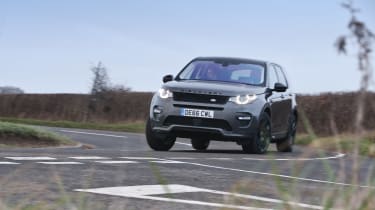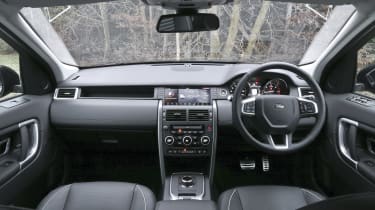Land Rover Discovery Sport review - A talented all-rounder - Land Rover Discovery Sport interior and tech
Subtly brilliant, the Discovery Sport takes fight to the Germans
Interior and tech
All Discovery Sports come with what Land Rover calls '5+2' seating - i.e. seven seats. Although they're not the easiest to get into, the rear-most seats are just as useful as those in many people carriers - and it's a bit of a USP in the premium compact market. The middle row is very spacious and it slides, splits, folds and tilts to help those behind get comfortable, while buyers can opt for climate control and even a USB port for the third row too, allowing bored teenagers charge up their smartphones.
Infotainment hasn't been a strong point with Jaguar Land Rover products in the past, but JLR recognises this and has recently introduced a suite of updates into its products, the Discovery Sport included. The latest InControl Touch Pro system is far better than the version it replaced, now using a 10.2-inch touchscreen with a user interface inspired by smartphones.
It's higher resolution than before, responds to pinches and swipes like a smartphone screen, and uses a 60GB solid state drive and quad-core Intel processor to deliver better performance. We've not yet tried it in the Discovery Sport, but in the Evoque it works well and finally gives Land Rover a competitive infotainment system.
All versions of the Discovery Sport come with Land Rover's proven Terrain Response system, which alters engine and automatic gearbox responses - along with the stability control, braking and the four-wheel drive - depending on the terrain underneath. It's clever, because it really works when the going gets sticky.
Several safety systems are also included on 2017 model year Discovery Sports. Driver Condition Monitor constantly looks for signs of fatigue within a driver (think longer blinks and a dipping head rather than eye bags and grey hairs) and provides visual and audible warnings if it senses you becoming tired. Intelligent Speed Limiter can prompt a driver and even begin to slow the car based on traffic sign recognition, while Lane Keep Assist helps prevent you drifting out of your lane.





